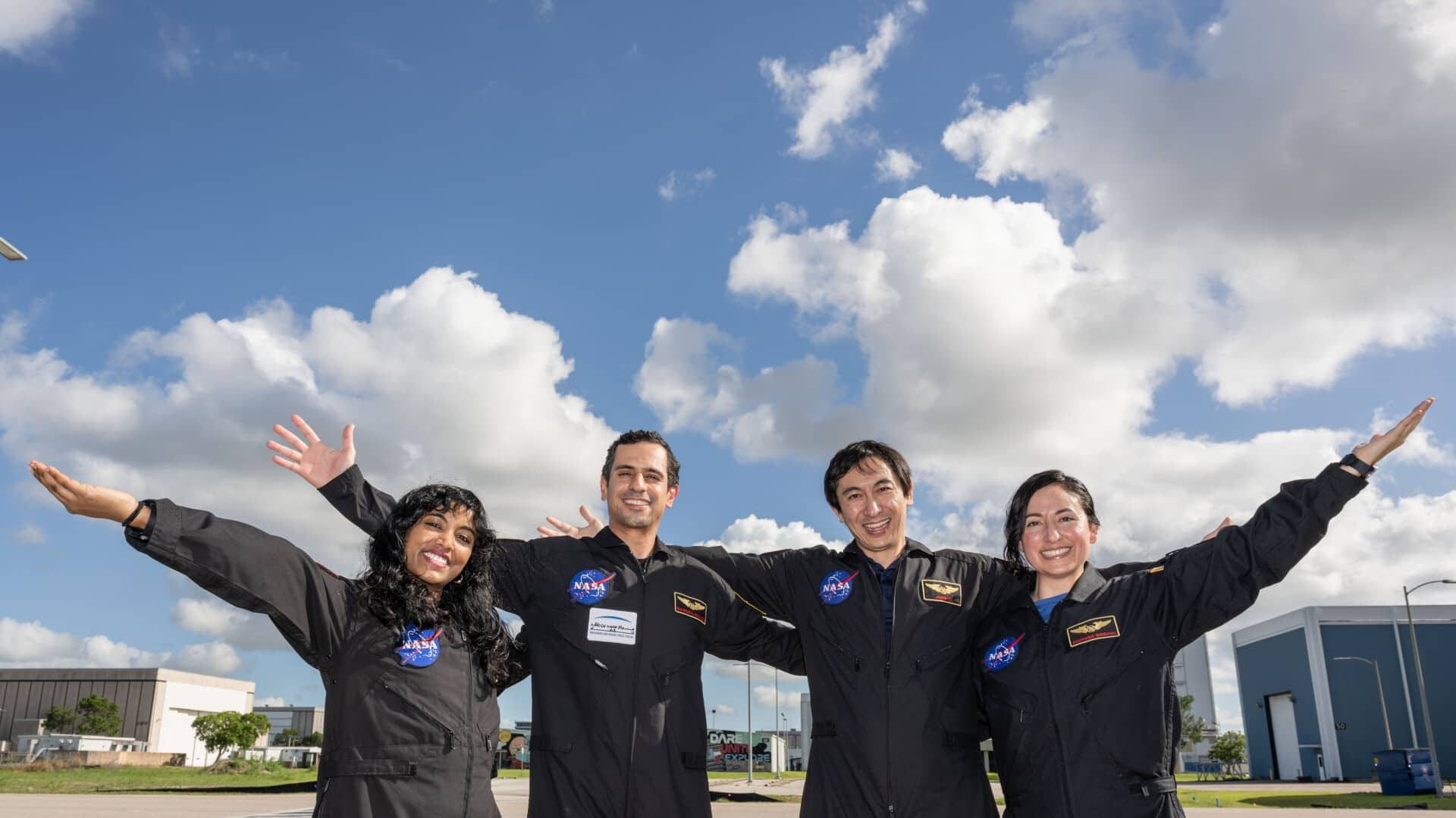
45 days on Mars (well, almost): HERA crew finishes simulation
What's the story
Jason Lee, Shareef Al Romaithi, Stephanie Navarro, and Piyumi Wijesekara have completed a 45-day simulated journey to Mars, as part of NASA's Human Exploration Research Analog (HERA) Campaign 7 Mission 2. The mission took place at the Johnson Space Center in Houston, with the aim of studying how future astronauts might react to isolation and confinement during deep-space journeys. The crew did operational tasks and participated in 18 human health studies focusing on behavioral health, human-system interfaces, and team dynamics.
Jubilation
Celebrating mission conclusion
As the mission concluded, the crew viewed real footage from the Artemis I mission to simulate their landing. HERA operations lead Ted Babic celebrated their egress by ringing a bell nine times outside the habitat. "All in a safe passage to Mars and a safe return to Earth. May this vessel be a safe home to future HERA crews," Babic said, presenting them with their mission patch, which they placed on the door of the HERA habitat.
Discussion
Crew discusses team dynamics and coping with isolation
Three days before the mission concluded, Al Romaithi and Wijesekara participated in a live Q&A session. They discussed team dynamics, adaptation to unexpected circumstances, and coping with isolation. "This will be very useful when we get to the Moon with Artemis missions and even beyond that when we go to Mars," Wijesekara emphasized. She also advised on building stronger teams, "Spend time with your crewmates, get to know them deeply, and be a good listener."
Mission challenges
Challenges and solutions during simulated Mars mission
The crew faced challenges like communication delays which taught them teamwork, patience, and precise planning. They used a 3D printer onboard HERA to address equipment issues. In case of an outer emergency like a hurricane, they explained that HERA gave them step-by-step emergency instructions. Al Romaithi shared that his background in aerospace engineering and aviation, helped him stand out in the application process.
Habitat life
Health monitoring and bonding moments in HERA habitat
Medical evaluations as well asnutrition-specific meal plans were crucial for the mission, with daily monitoring of the crew's physical and mental health. The crew also grew lettuce hydroponically and had four pet shrimp named Buzz, Theodore, Alvin, and Simon. Inside the HERA habitat, mealtimes were used by the crew for sharing stories, and supporting each other. Wijesekara shared her experience saying, "This was one of the best experiences I've had in my life."